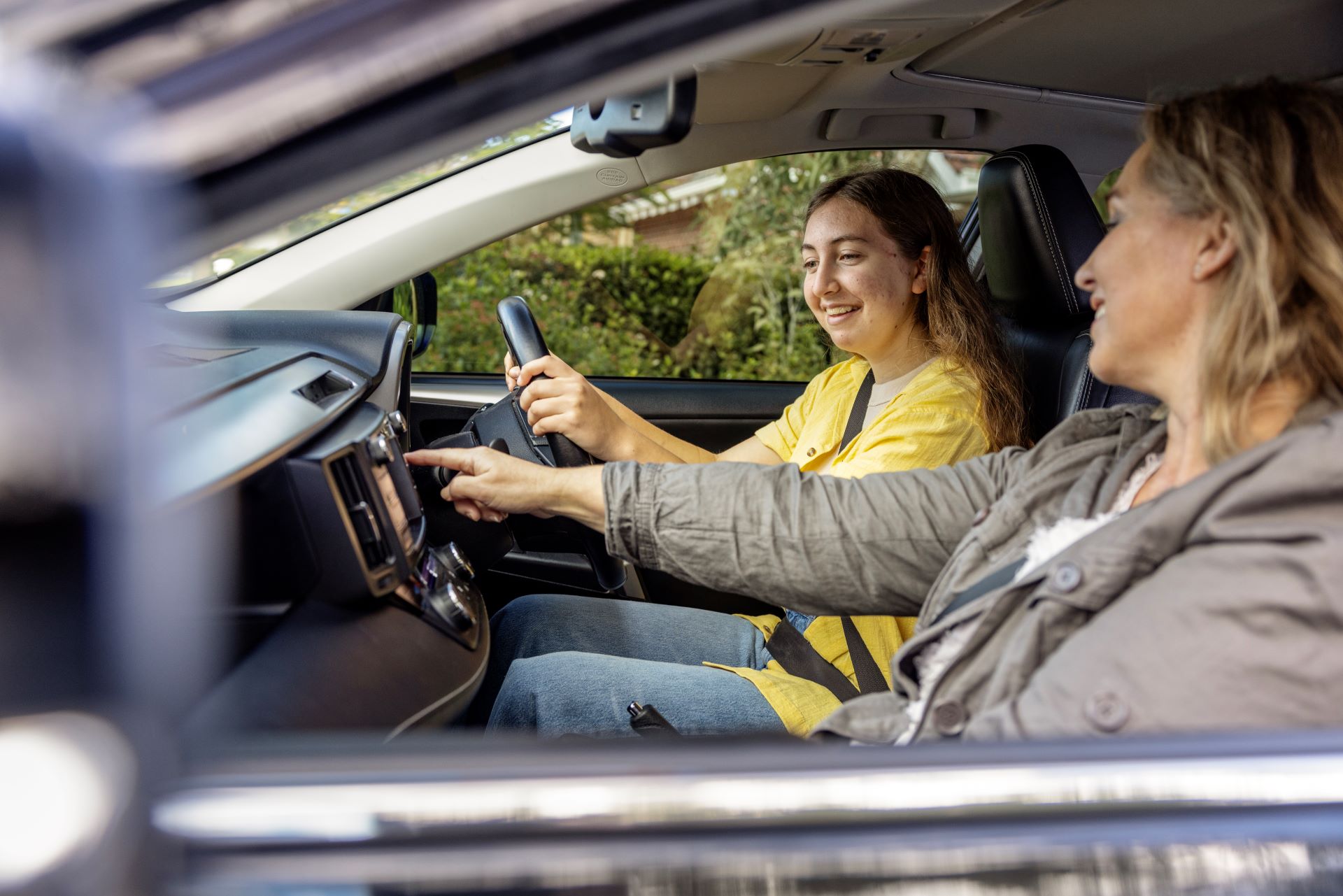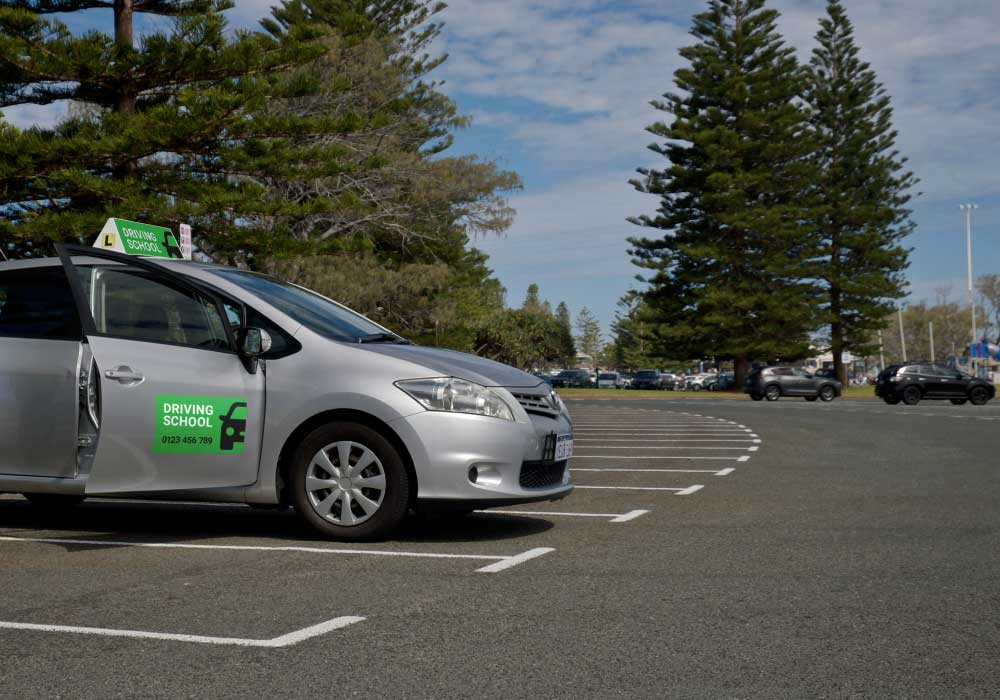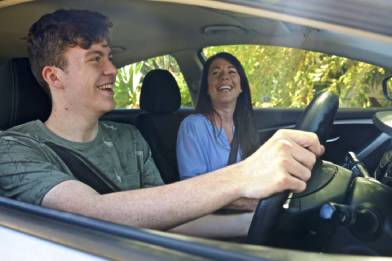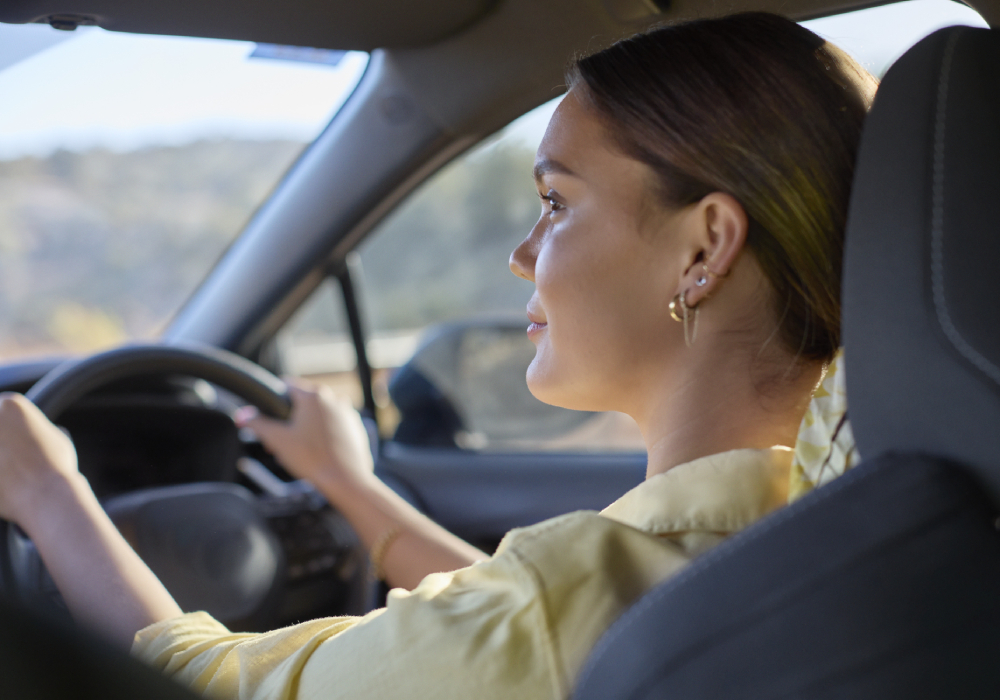
Practical tips on teaching someone to drive
Practical tips on teaching your learner how to drive safely with confidence
Getting in the passenger seat while your learner driver takes the wheel will be daunting at first. There’s a lot more to this major life milestone than just teaching your learner how to drive. You’re also helping them take a step towards independence and setting them up for a lifetime of safe driving.
As you navigate the nerves and excitement of the learning to drive process together, you’ll find it also requires teamwork, good communication, and a lot of patience.
To help make the process easier, we’ve put together a guide of practical tips on teaching your learner how to drive safely with confidence.
If you can, it's a good idea to supplement private lessons with lessons from a professional driving instructor throughout the learning to drive process, particularly at the beginning and end.
Professional driving instructors’ vehicles are fitted with duplicate controls which allow them to brake the vehicle or switch off the engine where necessary. This helps to keep your learner driver safe as they first take to the roads. Towards the end of the learning to drive journey, driving instructors are also a great source of information and support for the practical driving assessment (PDA).
Check out our tips on selecting the right driving instructor for your learner.
Before you begin
Learning to drive involves more than just the practical skills. Here are some tips to help you prepare for your first lesson together:
- When planning a lesson, you might want to refresh yourself on the road rules you’re planning to focus on! Check out the Department of Transport’s website for plenty of great resources for supervisor drivers, as well as learners.
- Check if your insurance covers your learner driving your car, and the amount of excess you might need to pay in the event of a claim.
Once you’re feeling confident to get in the passenger seat, it’s time to help your learner get ready for their first time in the driver’s seat:
- Discuss what it means to be a responsible driver. Reiterate the importance of driving at a safe speed: the faster a vehicle travels, the harder it is to respond to hazards, and the worse the outcome will be in a crash. Explain the dangers of common distractions like phones, music, and loud noises. Discuss common road courtesy and how to act when pulled over by police or passing emergency service vehicles.
- Help them get familiar with the vehicle. Take the time to go through a car’s common warning signals and basic car maintenance; how to fill up with fuel and the risks of letting it get too low.
- Commentate your own driving. This involves describing aloud exactly what you are doing as you’re driving, and what you’re doing to avoid potential risks. It will help your learner understand how to navigate real-life scenarios from the comfort of the passenger seat.
Planning a lesson
All good driving lessons start with a plan. Ideally, lessons should be around 30 minutes, especially at the beginning when there is a lot of new information for your learner to absorb. The first few lessons might be as simple as driving a couple of laps around the neighbourhood.
It’s also important to have a conversation to set some ground rules and expectations for how you’ll both behave, and to discuss any concerns you might have.
Once your learner starts to build their skills and confidence, you can start to incorporate new situations and settings into your lesson plans. Add busier roads, nighttime driving, new road surfaces and varying weather conditions into the mix where possible.
Before they take off
- Drive to a quiet area to start the lesson. A large empty car park or quiet back streets will make it less stressful for you and your learner.
- Ensure the L plates are clearly displayed on the front and back but not obscuring their view.
- Check your learner has their Learner’s Permit on them.
- Get your learner to check the oil, water, and fuel/charge levels, as well as the tyres, mirrors, and lights.
- Switch off the radio and put your phones away.
- Make sure your learner is sitting correctly so they have proper control of the car.
- Make time for a chat before you take off, so you can describe to your learner what they’ll be doing.
- Get them to write down the lesson start time in their logbook.
- Start off by spending some time on the fundamentals like starting the engine, indicating, using the brakes, horn, lights, and clutch. These things may sound very straightforward, but it can be a lot to remember for a learner!

Show and explain to them first
- Demonstrate the driving task to them.
- Explain what you are doing using commentary driving.
- Ask them to explain how they’d approach the task. If they’re unsure, give them time to think about every step in the task before doing it.
Let them try
- Talk them through the task while they’re practicing it – break it down into small steps.
- Discuss how they felt after doing the task. Give them positive feedback wherever possible.
- If they need more guidance, demonstrate the task again.
- Get them to practice the driving task until they’re confident.
When you're done
- Leave time at the end of each lesson for review and to discuss the next lesson. This time is important to give your learner detailed feedback about the things that they did right and wrong.
- Remain positive and encourage them to talk over any concerns that they may have.
- Reassure them, especially when starting out, that it takes a lot of experience and practice to learn how to drive!
- Keep track of what they’ve learnt so they appreciate how far they’ve come.
- Get them to write down the time they finished the session into their logbook.
- Remember to take the L plates off after each lesson.
Giving feedback
After each lesson, set aside time to provide your learner with feedback. Here are some of our top tips for giving good feedback:
- Be positive. Start out by giving them praise for the tasks performed well.
- Give feedback immediately. You don’t always need to wait until the end of a lesson to give feedback. If your learner is practicing a specific task and you want to give feedback, it’s best to ask them to park so you can discuss what’s occurred before trying again.
- Be specific. When giving feedback it’s best to avoid general comments, like “don’t speed” or “drive safely”. Instead, focus on one key point that’s relevant to an action that has just been taken.
If you can, it’s also a good idea to supplement private driving lessons with professional lessons with a driving instructor. Check out our guide on choosing the right driving instructor for more information.
Related articles
Check out more Tips & Resources

Professional driving lessons
The benefits of having a qualified instructor teach your Learner.

Supervisor checklist
How you can prepare for this journey and best support your learner driver.

Tips to complete your 50 driving hours in WA
How to reach 50 hours of supervised practice before your practical driving test.
